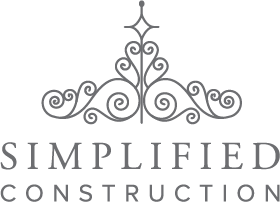 Understanding all that goes into a construction project means starting with the basics, whether it be a renovation, a historic restoration in one of Charleston’s historic neighborhoods, or a custom-built Lowcountry home. A clear understanding of how the Architect and General Contractor do business and the terms and phrases they use will help to improve your chances of having a great experience.
Understanding all that goes into a construction project means starting with the basics, whether it be a renovation, a historic restoration in one of Charleston’s historic neighborhoods, or a custom-built Lowcountry home. A clear understanding of how the Architect and General Contractor do business and the terms and phrases they use will help to improve your chances of having a great experience.
In this blog we focus on some of the common terms used in creating your Charleston property. We have also prepared a Free E-Book on the subject, our “Guide to Construction Terms used in Historic Downtown Charleston, SC, “ that you can download and keep with you. This is the world our construction crews live in on a daily basis and the building related jargon we use when we build-out and restore homes in and around Charleston SC and the surrounding barrier islands.
Here are some of the basics:
- Apron – A paved area, such as the juncture of a driveway with the street or at a garage entrance.
- Backfill – The gravel or earth replaced in the space around a building wall after foundations are in place.
- Casement – A window sash that opens on hinges on the vertical edge.
- Door Buck – A rough frame for a door.
- Eaves – The extension for the roof beyond the walls of the house. Helps to keep the walls dry in heavy rain.
- Fascia – A flat board used to trim finish a vertical surface, aka Fascia Board.
- Gable – The triangular part of a vertical wall under the roof line, also Gable End.
- Hardyplank – A cementacious plank similar to wood siding and used as an alternative. Resistant to rot and termite infestation. Can be used in most areas but may be restricted in use in downtown Charleston under BAR (Board of Architectural Review) governance.
- Jamb – An upright surface that lines an opening for a door or window.
- Kiln Dried – Artificial drying of lumber to specified moisture content adding stability and reducing the tendency to warp.
- Lag or Coach Screws – Large, heavy screws, used where great strength is required, as in heavy framing or when attaching ironwork to wood, building decks or dock structures.
Note: Learning is fun but always difficult to get started. As your Charleston construction project progresses, you have the chance to experience the construction process first-hand, and we encourage you to visit your job-site as frequently as possible. Let us help you get started with our FREE Ultimate Guide to Building terms…

